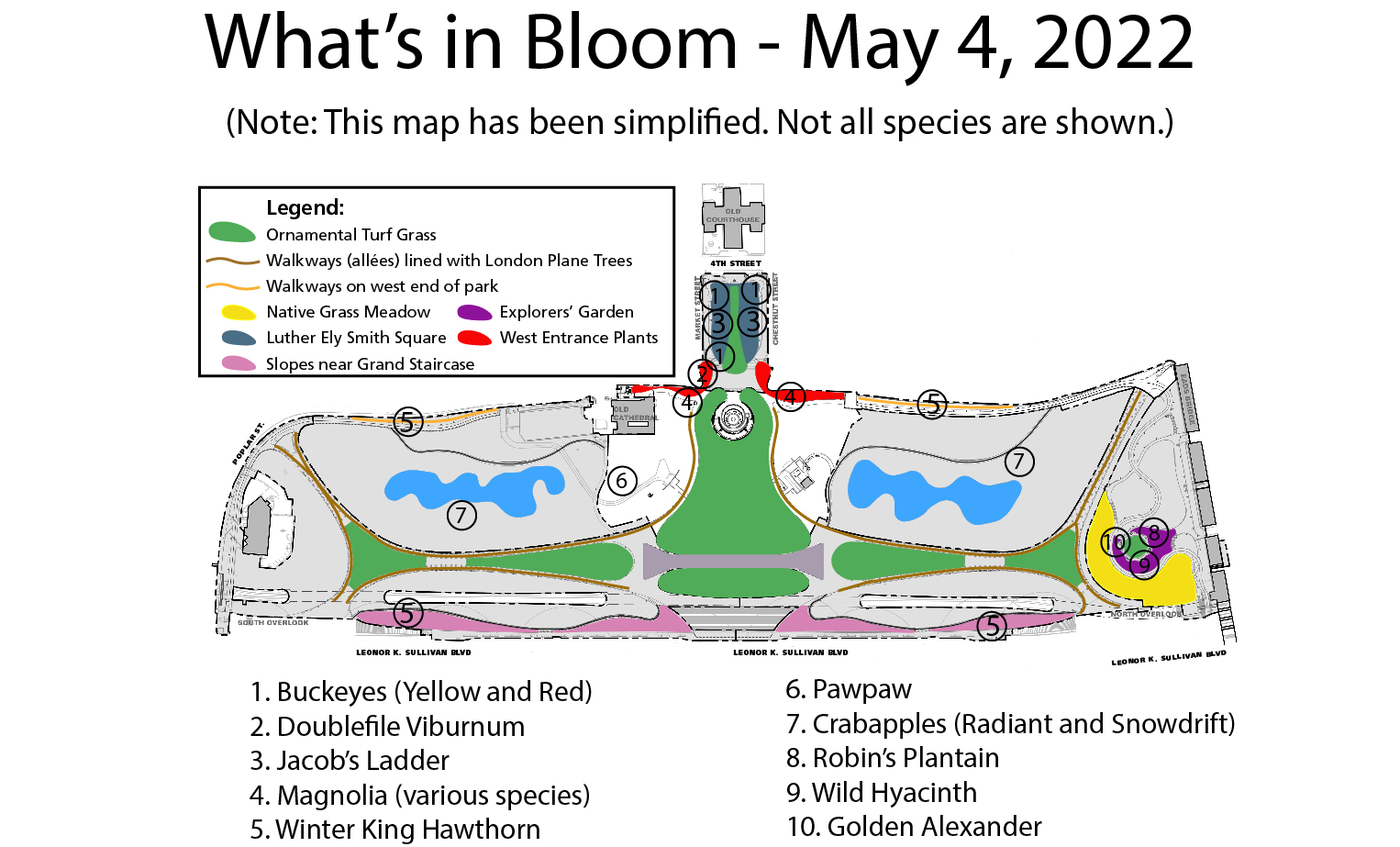
1. Buckeyes, Aesculus pavia and Aesculus flava. Blooming in Smith Square.
Buckeyes produce floral clusters that look downright tropical. Though this species produces large nuts, the nuts are poisonous and can only be ingested if prepared in a way that breaks down their toxins. Both buckeyes are shade tolerant and grow well with close neighbors. They are thriving in close proximity to other species in Smith Square.
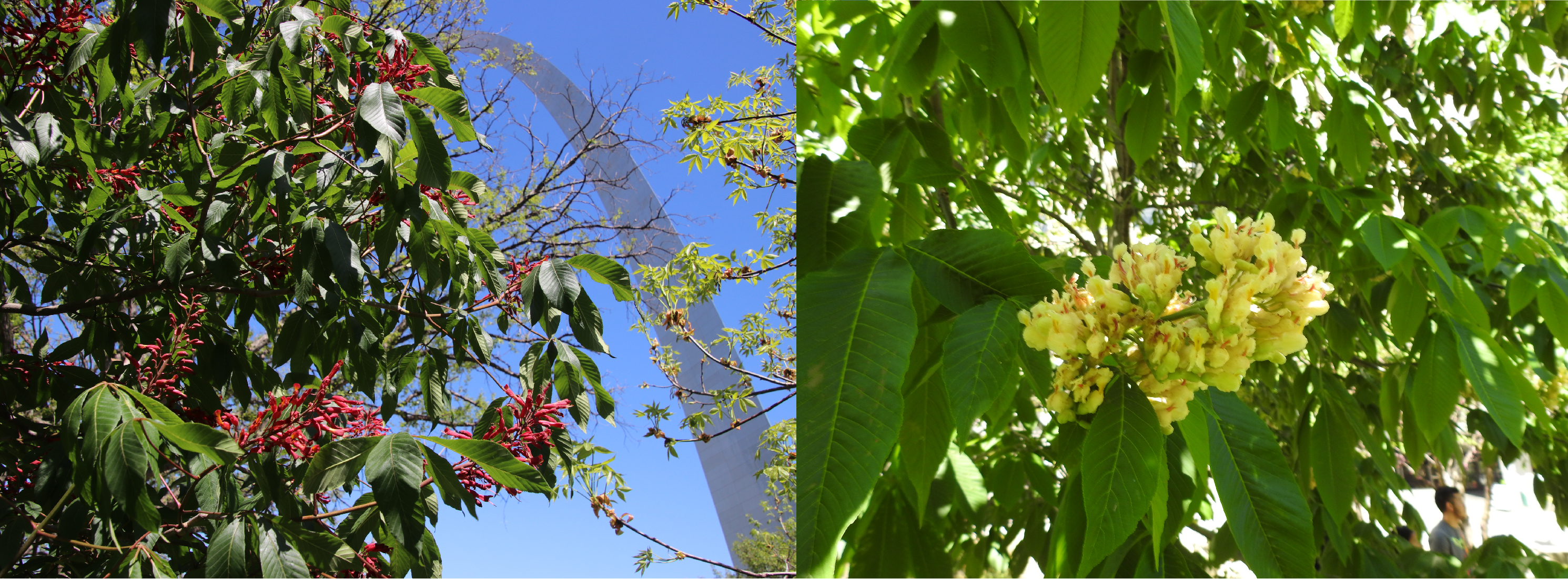
The red buckeyes have red flowers and the yellow buckeyes have yellow - easy! Red's latin name is Aesculus Pavia and the yellow is Aesculus flava. Red buckeye photo by D. Reissing, NPS. Yellow buckeye by NPS.
2. Doublefile Viburnum, Viburnum plicatum var. tomentosum. Blooming around the periphery of Luther Ely Smith Square.
Doublefile Viburnum's wild form is native to China and Japan, but the more popular sterile form is grown in gardens all around the world. This species is very hardy and adaptable; in fact, it has been reported as invasive in Rock Creek National Park in Washington, DC. Since it is not native, few native insects can eat it, but its nectar is attractive to butterflies and its shape is appealing to humans.

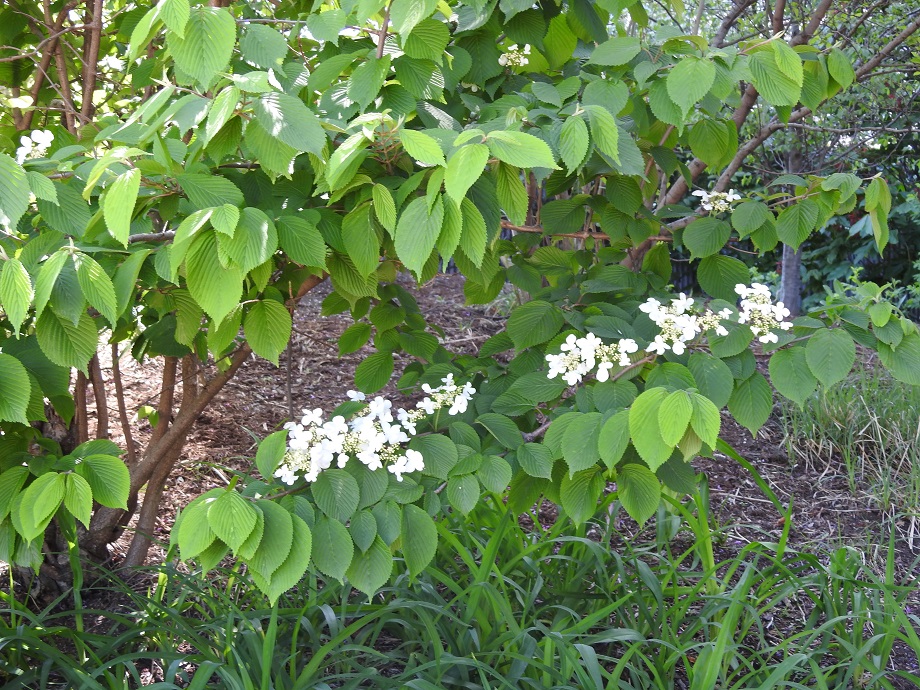
The “doublefile” part of Doublefile Viburnum's name comes from the serrated, saw-like edges of its leaves. Both viburnum photos by B. Michel, NPS.
3. Jacob's Ladder, Polemonium reptans. Abundant in the Explorer's Garden, but easiest to find as a new planting next to the zen gardens in Smith Square.
It’s easy to remember the name Jacob’s Ladder: the leaves on this flower’s stalk look like the rungs on a ladder. This species also has delicately pretty blue bell-shaped flowers. It attracts about a dozen native bee species, making this an excellent landscaping choice for anyone looking to improve habitat for pollinators. It prefers shady locations.
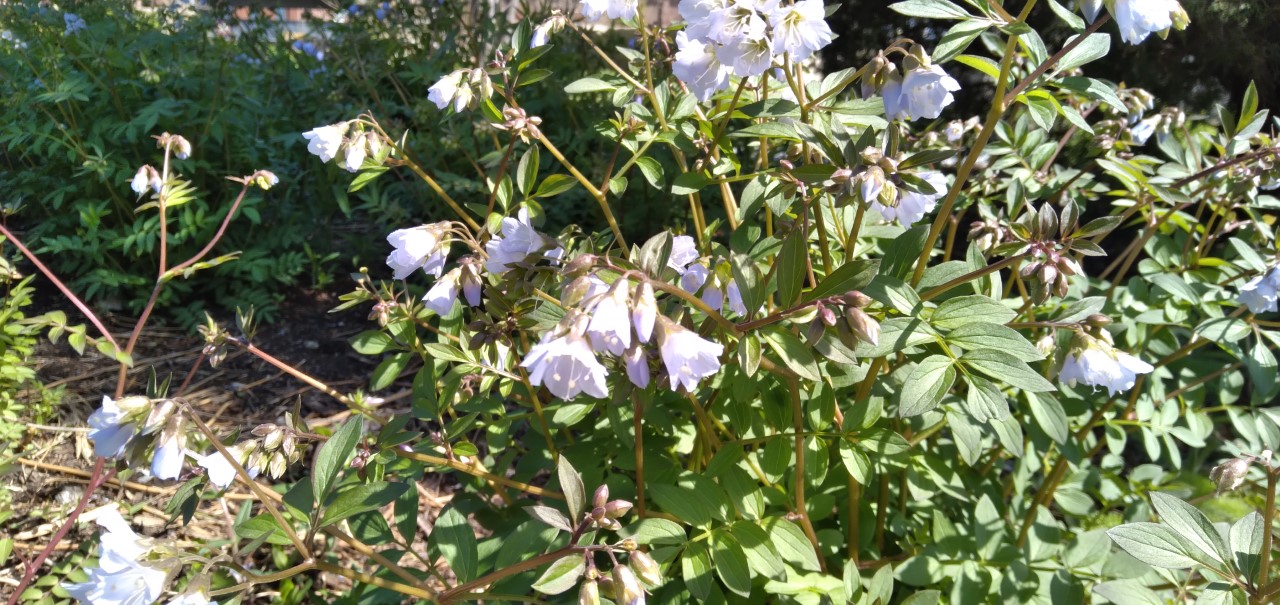 Photo by A. Prosser, NPS.
Photo by A. Prosser, NPS.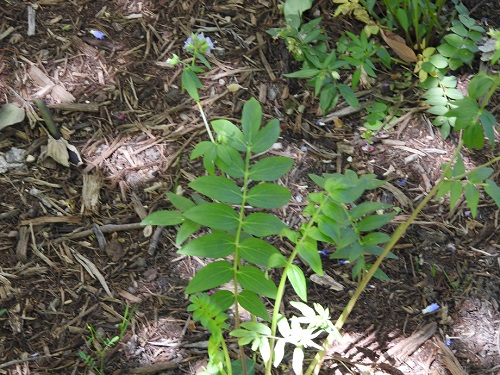
The leaves of Jacob's Ladder resemble the rungs of a ladder. NPS Photo.
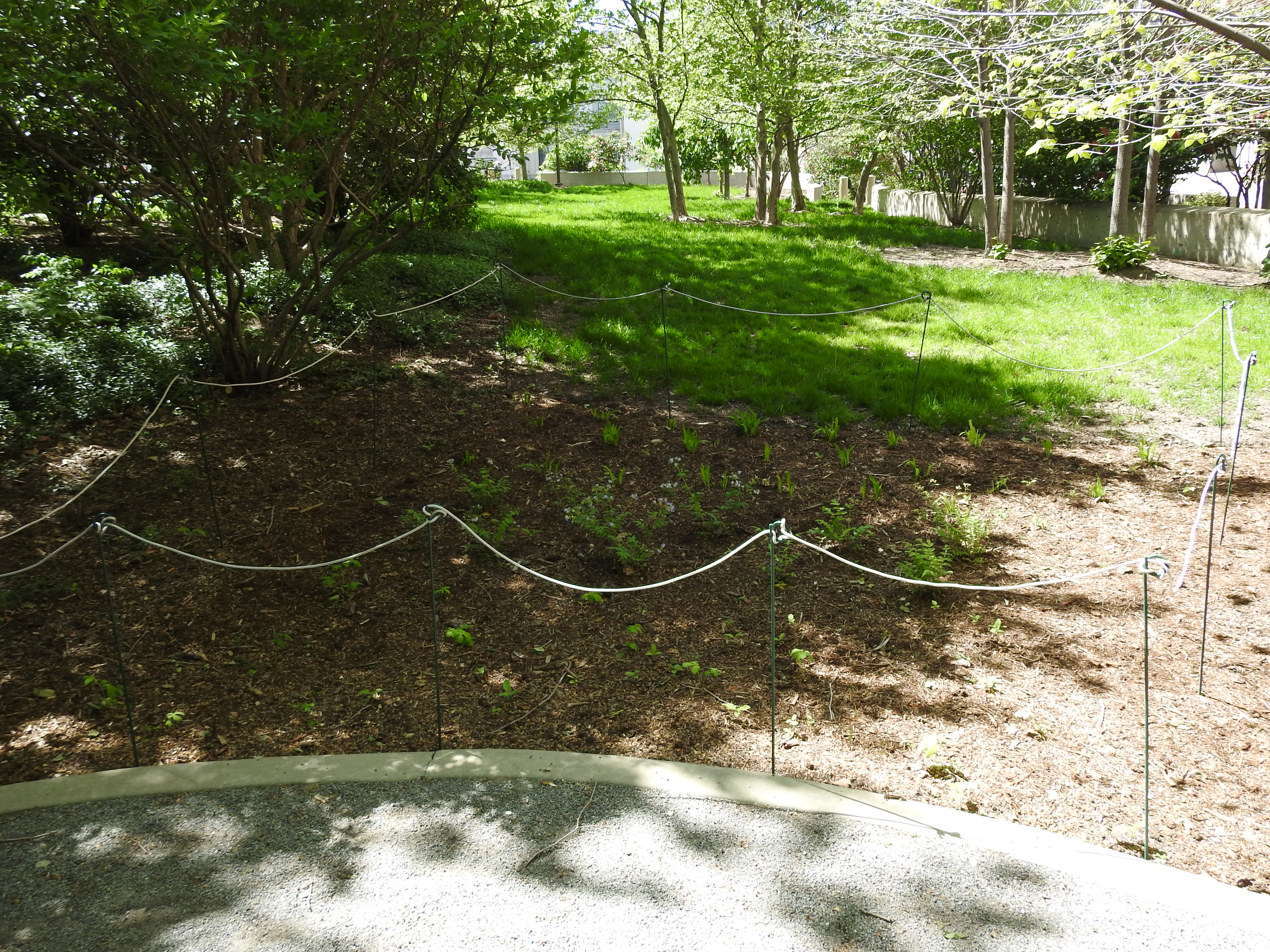
Find freshly planted specimens of Jacob’s Ladder on the edge of the zen gardens in Smith Square. Remember to stay behind the rope to help these babies safely adjust to their new home. NPS photo.
4. Magnolia, various species. Found all over the park.
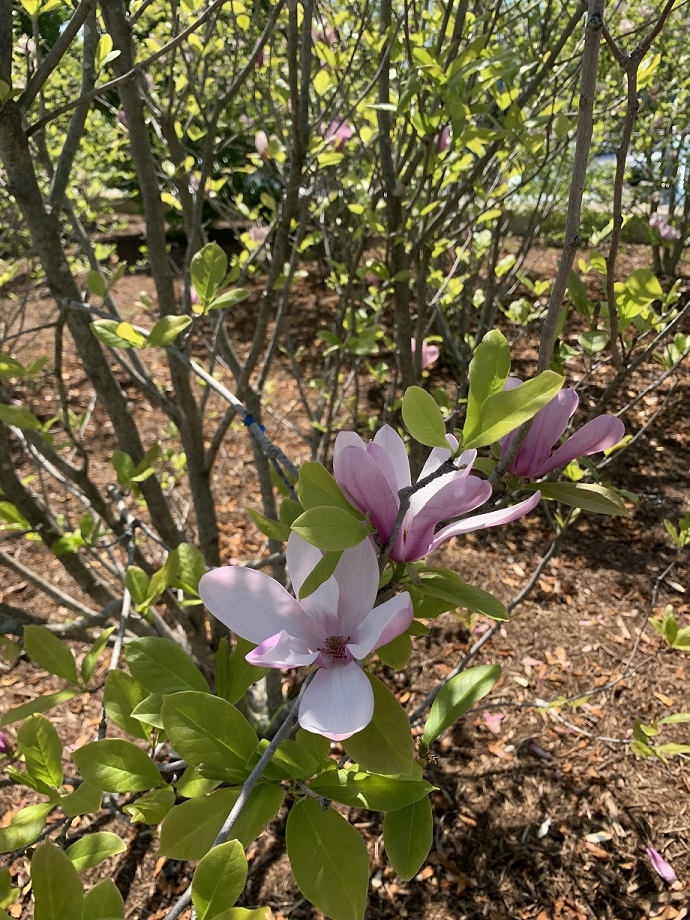
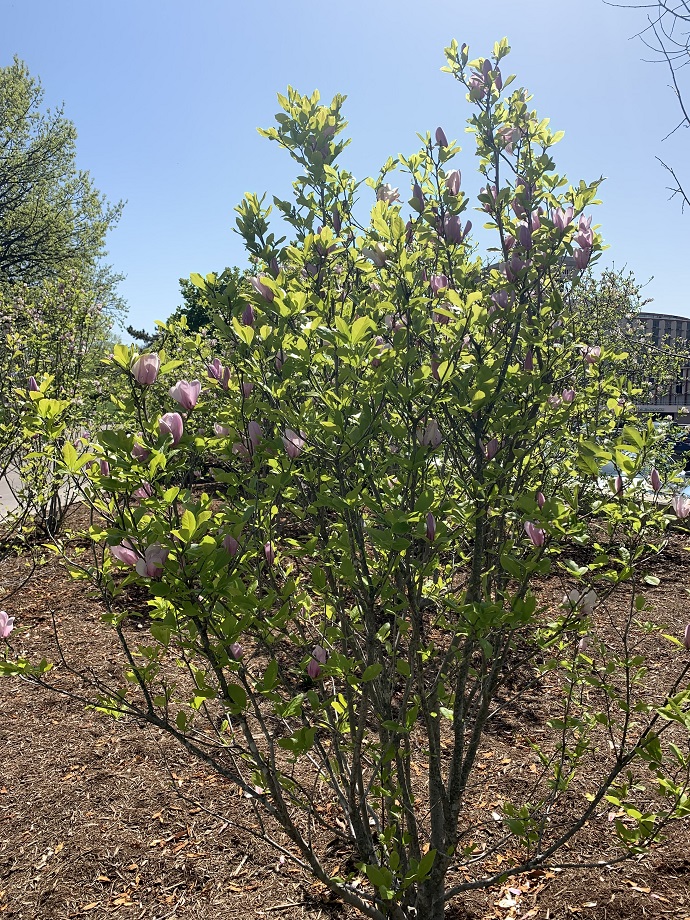
Both photos NPS.
The magnolias are still blooming and are still frequently asked about by our visitors. However, since leaves are now also present on the trees along with the flowers, they are a bit less showy than they were a few weeks ago. Check out our previous blog post, Magnolia Madness, for more information about the various magnolias planted here. Other species previously mentioned on the blog (Roundleaf Ragwort [Packera obovata], Blue Phlox [Phlox divaricata or Wild Sweet William], Eastern Redbuds [Cercis Canadensis], and Spicebush species [Lindera bezoin and Lindera glauca var. salucufolia] are also still blooming.
5. Winter King Hawthorn, Crataegus viridis. Currently in bloom on the north and south walkways along Memorial drive, along the East Slopes by the Grand Staircase, in the Generator Bed, and the North Gateway area - really all over the park!
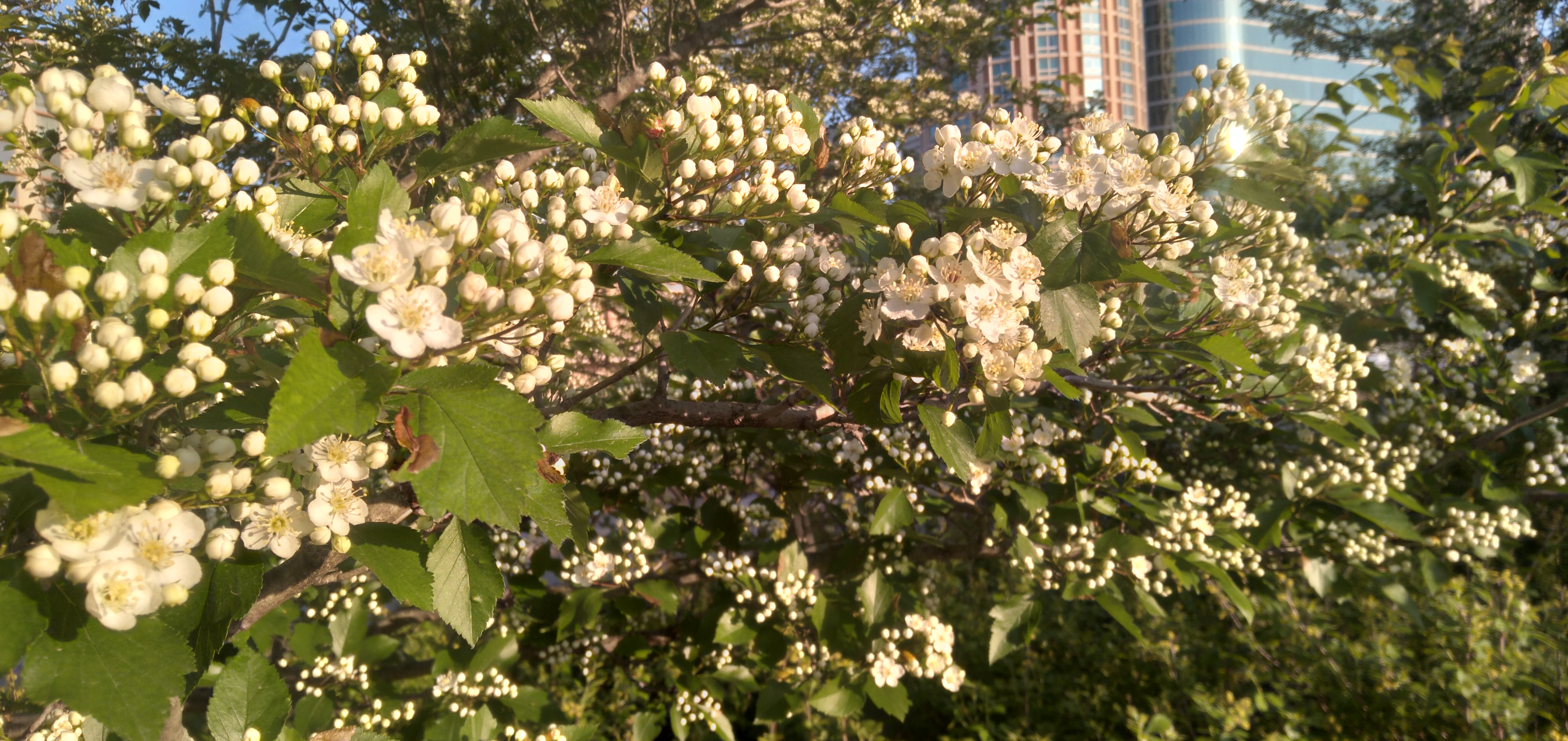 Photo by A. Prosser, NPS.
Photo by A. Prosser, NPS.There’s a reason this species was planted so many places: it’s a great tree for the area. Hawthorns are native to forests of the Southeast United States, but do well in urban locations as well. The beautiful spring flowers are lightly fragranced and there is some evidence that birds prefer this species as a nest tree. In the fall, red fruits will appear and the leaves will take on fall colors. The fruits stay on the tree most of the winter and are a favorite of local birds. By looking at the name Hawthorn, you might think this tree is thorny. Wild green hawthorns do usually have thorns, but the Winter King cultivar we have here is thornless.
6. Pawpaw, Asimina triloba. Blooming near the shipping and receiving entrance.
Have you ever tasted a pawpaw? It’s America’s largest native fruit! Around September, banana-sized plump green fruits will be on the trees. The fruits are very soft and have a short shelf life, so they aren’t commercially valuable, but Missourians love them: In fact, the pawpaw is Missouri’s official state fruit tree! This species has been enjoyed by the Osage, Kansa, Choctaw, and Pawnee for time immemorial. It’s described as a custardy tropical pineapple. Zebra swallowtail caterpillars rely on the pawpaws as a larval host plant.
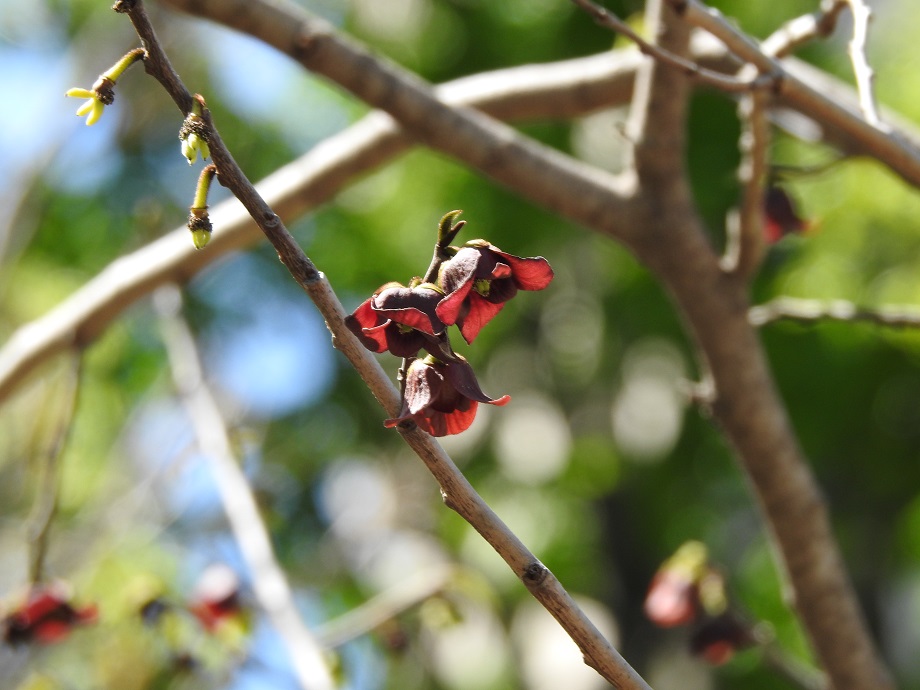
The trees currently have blood-red flowers but no developed leaves. Since the tree evolved to attract beetle and fly pollinators to its flowers, the blooms smell like rotting fruit. NPS Photo.
7. Crabapples, Radiant and Snowdrift. Malus ‘radiant’ and Malus 'snowdrift'. There are 14 radiants, mostly around the south pond, and 8 snowdrifts, near the north and south ponds and near the back of the Old Cathedral.
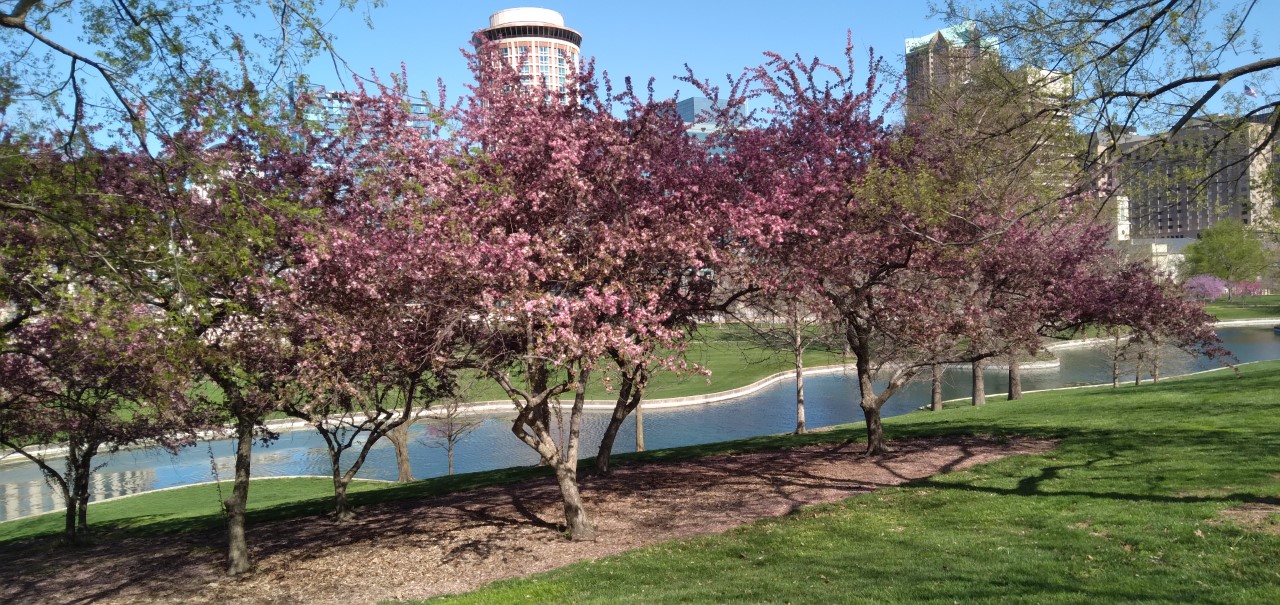 Photo by A. Prosser, NPS. This is the 'radiance' cultivar.
Photo by A. Prosser, NPS. This is the 'radiance' cultivar. Photo by A. Prosser, NPS. This is the 'Snowdrift' cultivar.
Photo by A. Prosser, NPS. This is the 'Snowdrift' cultivar.Malus is a genus of a few dozen trees and shrubs from Europe, Asia and North America. We have two species planted here, but many others exist. In the fall, the tiny crabapples these trees produce will be about ½ inch in diameter – perfect for birds.
8, 9, and 10 are all growing together in the Explorer Garden. See if you can pick all of them out in this photo:
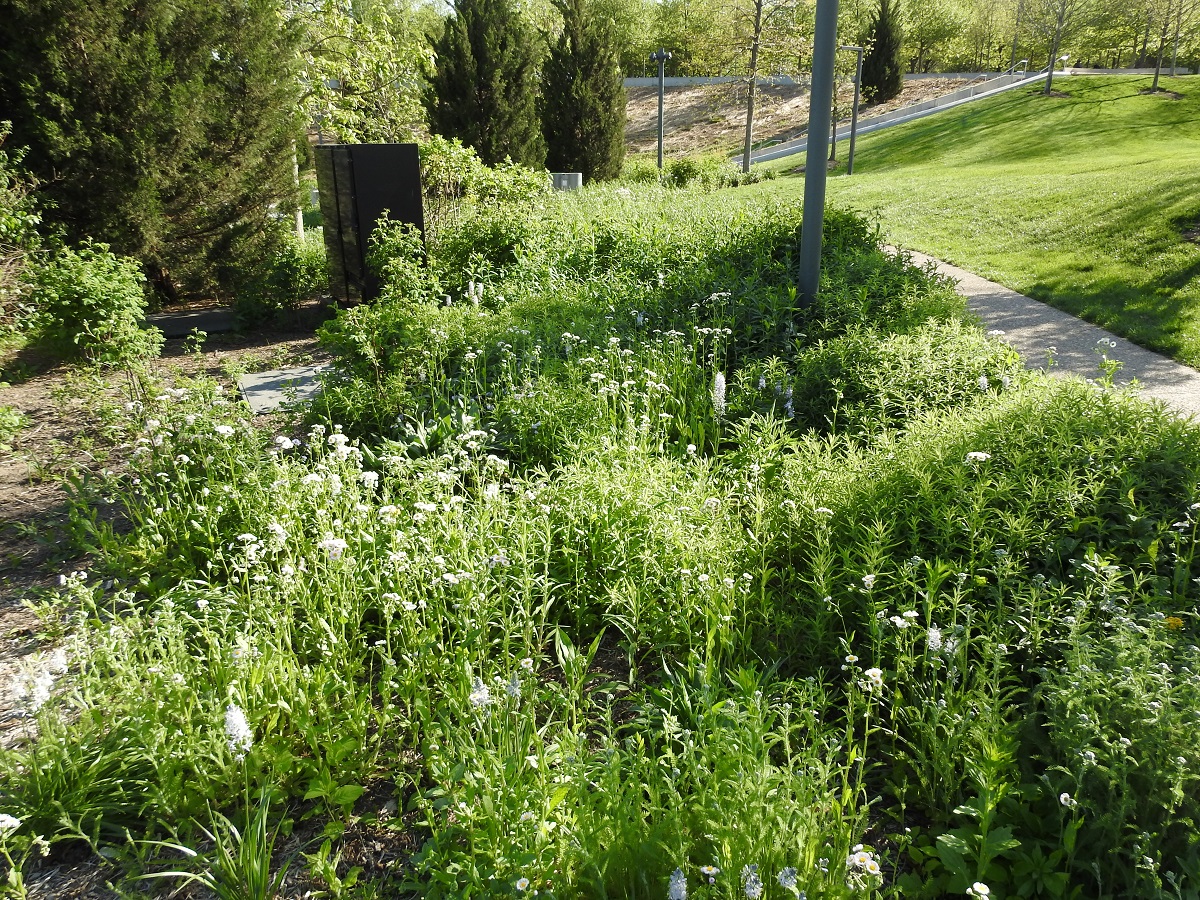
8. Robin's Plantain, Erigeron pulchellus. Currently blooming all over the Explorer's Garden.
Robin's Plantain is easy to grow and, since it spreads by underground rhizomes, it’s hardy once it gets established. Since this species grows well on disturbed land, it’s a great choice for anyone looking to introduce native plants into their landscaping. Several moth caterpillars and aphids feed on it, as well as rabbits and deer.
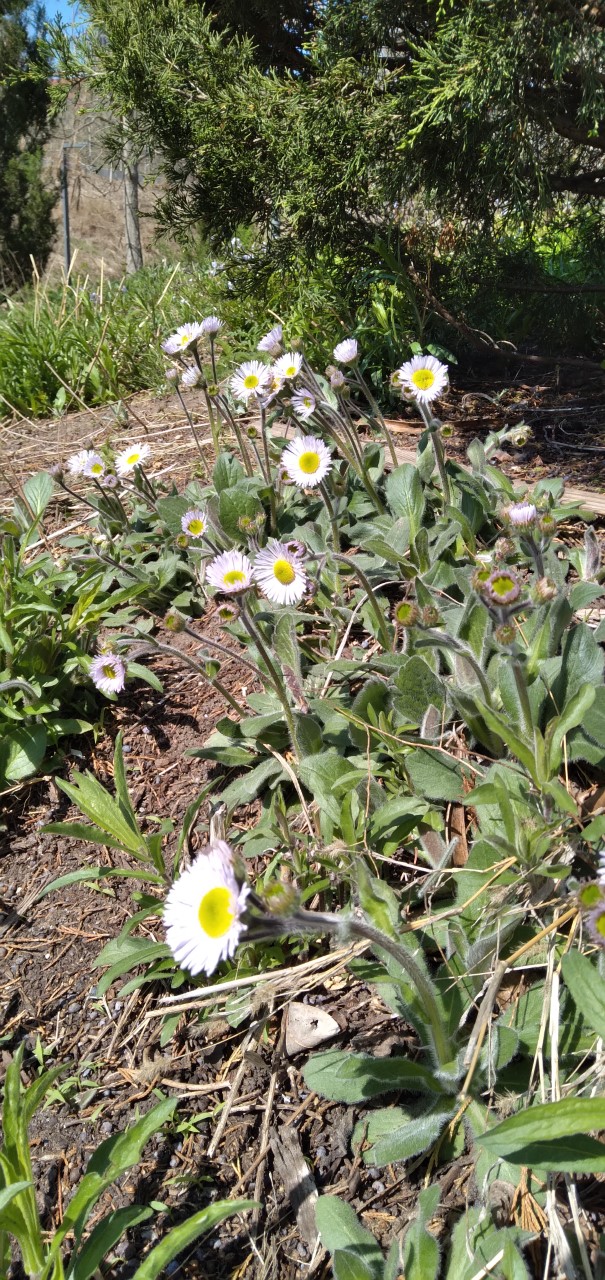
The small daisylike flowers are attached to knee-high stalks and can be white or pinkish. Both colors attract butterflies. Photo by A. Prosser, NPS.
9. Wild Hyacinth, Camassia scilloides. In several places in the Explorer's Garden.
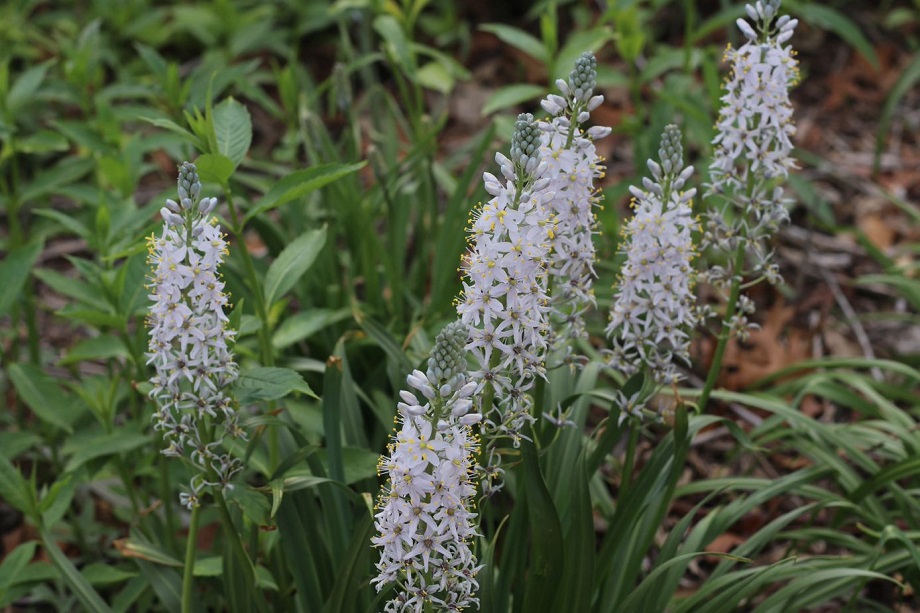 Photo by D. Reissing, NPS.
Photo by D. Reissing, NPS.The Wild Hyacinth is a gorgeous flower, with a tall stalk ending in a raceme covered in light pastel flowers. But under the surface, this plant is possibly even more interesting. It’s related to the camas that Lewis and Clark and the rest of the Corps of Discovery dined on during their stay with the Nez Perce in what is today northern Idaho. Like that camas, this camas also has edible bulbs that can be eaten raw, baked, roasted, boiled, or dried and were an important food source for many indigenous groups in this area prior to european colonization. The bulbs are only 1-3 cm. As a reminder, harvesting roots from our garden beds is not permitted.
10. Golden Alexander, Zizia aurea. Found in many locations in the Explorer's Garden.
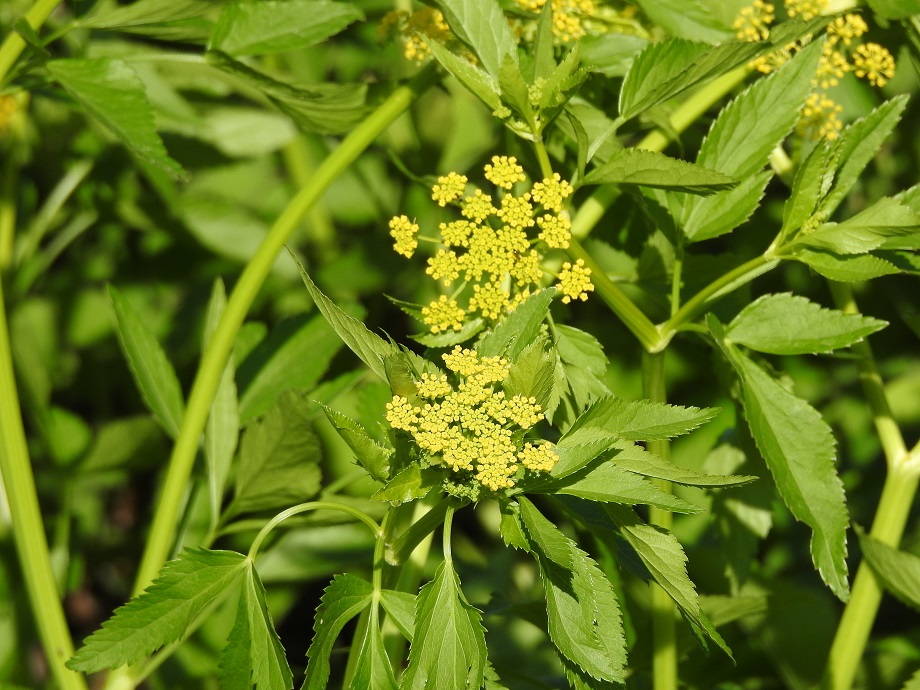 NPS photo.
NPS photo.Golden Alexander is remarkably widespread: it is found from New Brunswick to Florida, and west to Montana. It is important for many butterfly and bee species and the tiny yellow flowers are attractive to humans as well. In the fall, the leaves will turn purple. It's an excellent choice for a native plant garden.
Also blooming:

This stunner is a non-native columbine, and we're not sure why it's growing in the explorer's garden: the seeds must have been tossed in by someone. It's gorgeous, though, so we're enjoying it while it's here.
And one more thing:
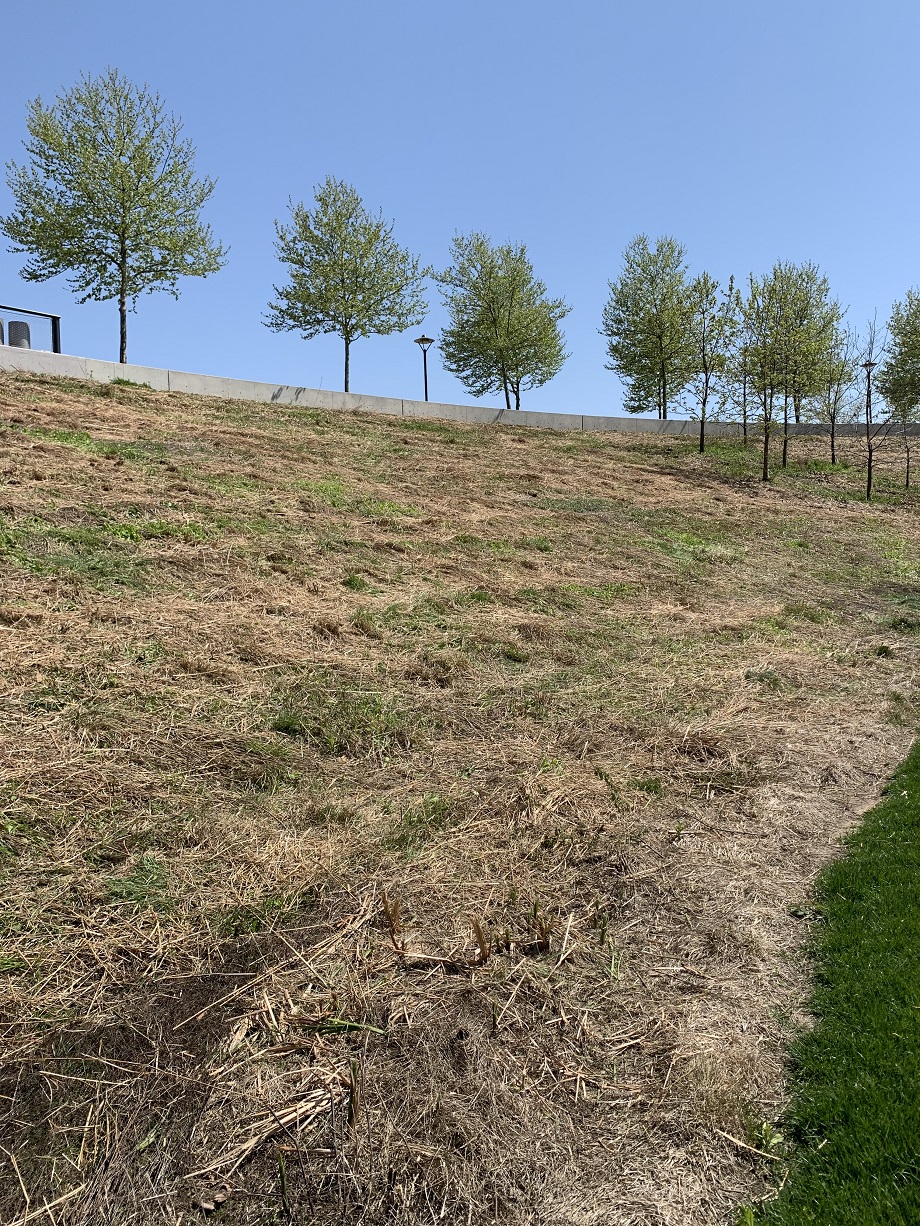 NPS Photo
NPS PhotoThis is not a bloom, but is an important update nonetheless: The prairie has been mowed! Mowing takes place only once a year. Mowing our prarire helps suppress shrub or woody tree growth and reduces fuel, which minimizes the potential of accidental fires. Mowing does not hurt the prairie: the plants have highly developed root systems and can quickly bounce back. The plants evolved to handle regular fires. Since we are located in a major urban area, we mow the prairie instead of burning it, but the plants handle the disturbance the same way. We look forward to seeing what new growth will pop up in the prairie in the next few weeks!
